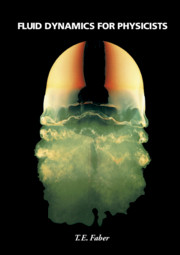10 - Non-Newtonian fluids
Published online by Cambridge University Press: 05 June 2012
Summary
Introduction
Fluids were defined in §1.2 as materials which cannot withstand a shear stress, however small, without deforming, and it was suggested there that glaziers' putty should be classified as a plastic solid rather than a fluid because it appears to hold its shape indefinitely unless subjected to appreciable force. But does it really do so? If we were to watch it for a very long time (and to find some way of preventing it from drying out during the process) might we not see putty flow under its own weight? After all, lead pipes flow visibly under their own weight given a century or two in which to do so, as anyone in Cambridge may verify by inspection of some of the older buildings there. The process by which lead flows, known as creep, involves vacancy diffusion, and provided that a specimen of lead is poly crystalline on a fine scale its creep rate should be proportional to the shear stress acting upon it; if so, then according to the definition given in §1.2 it is a fluid – a liquid rather than a gas, of course – though its viscosity is certainly enormous, greater than the viscosity of water by many orders of magnitude. If apparently solid materials such as polycrystalline lead are really liquid, is putty really liquid too? And if putty is not, what about chewing gum, or toothpaste, or yoghurt, or mayonnaise, or a host of similar substances which do not appear to flow under their own weight but which flow readily enough when squeezed?
Information
- Type
- Chapter
- Information
- Fluid Dynamics for Physicists , pp. 384 - 423Publisher: Cambridge University PressPrint publication year: 1995
